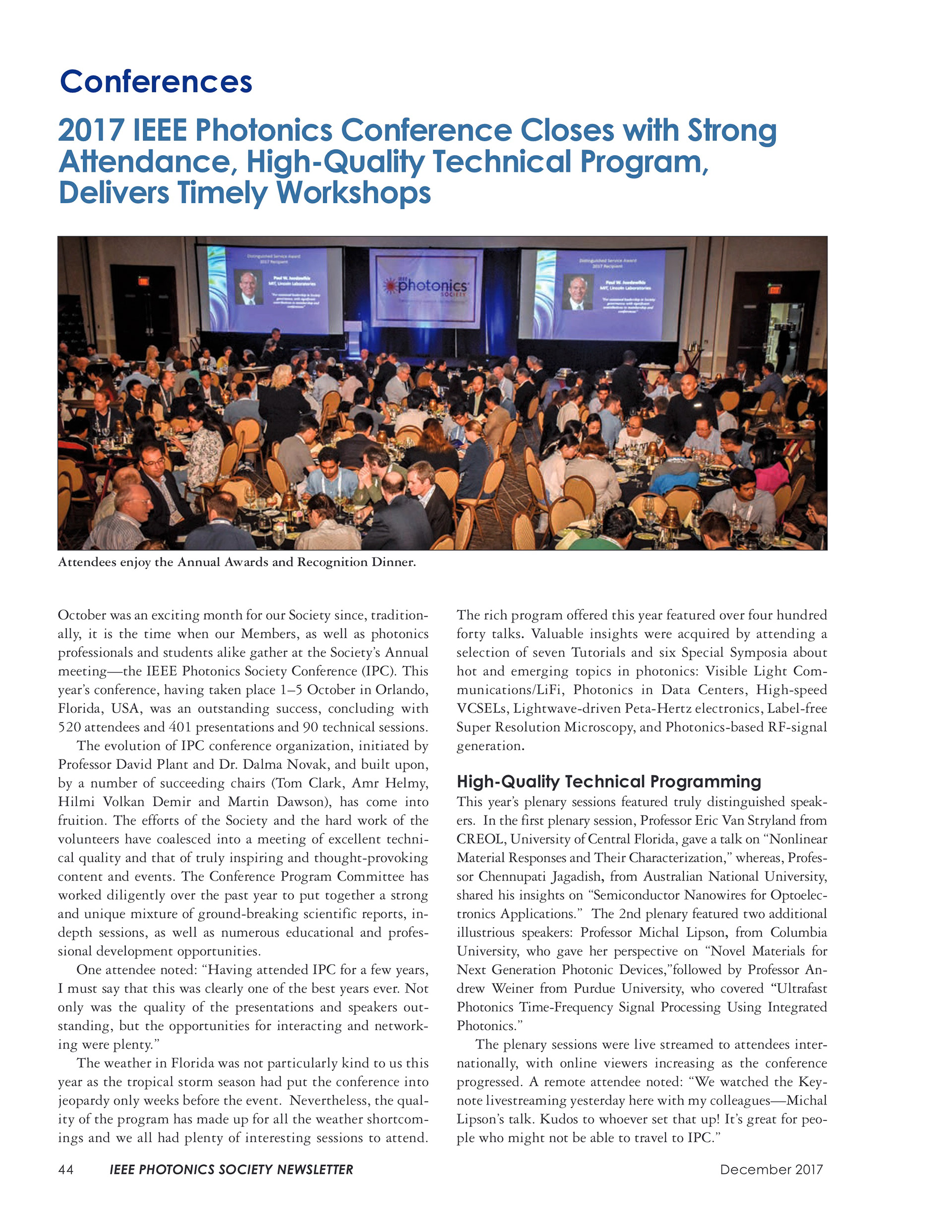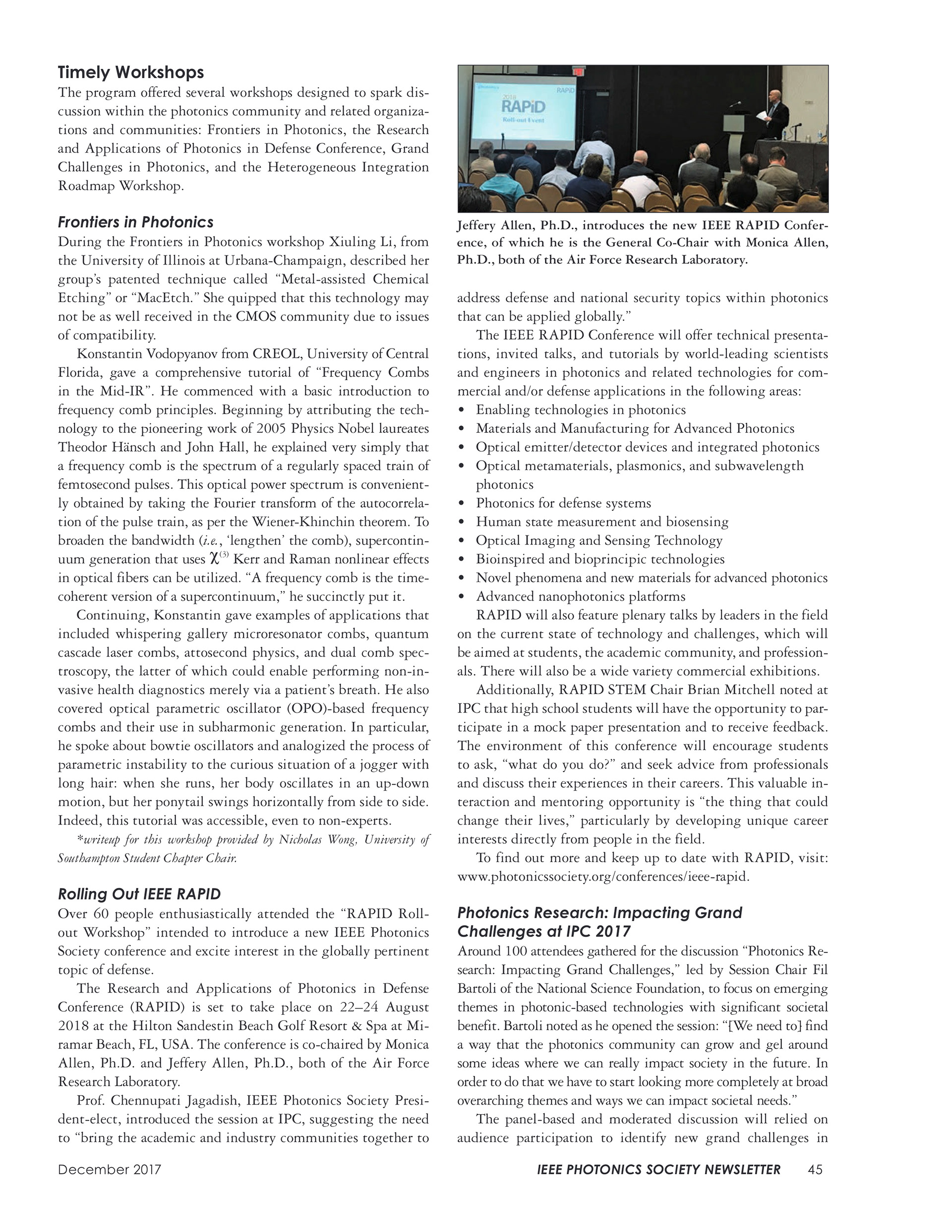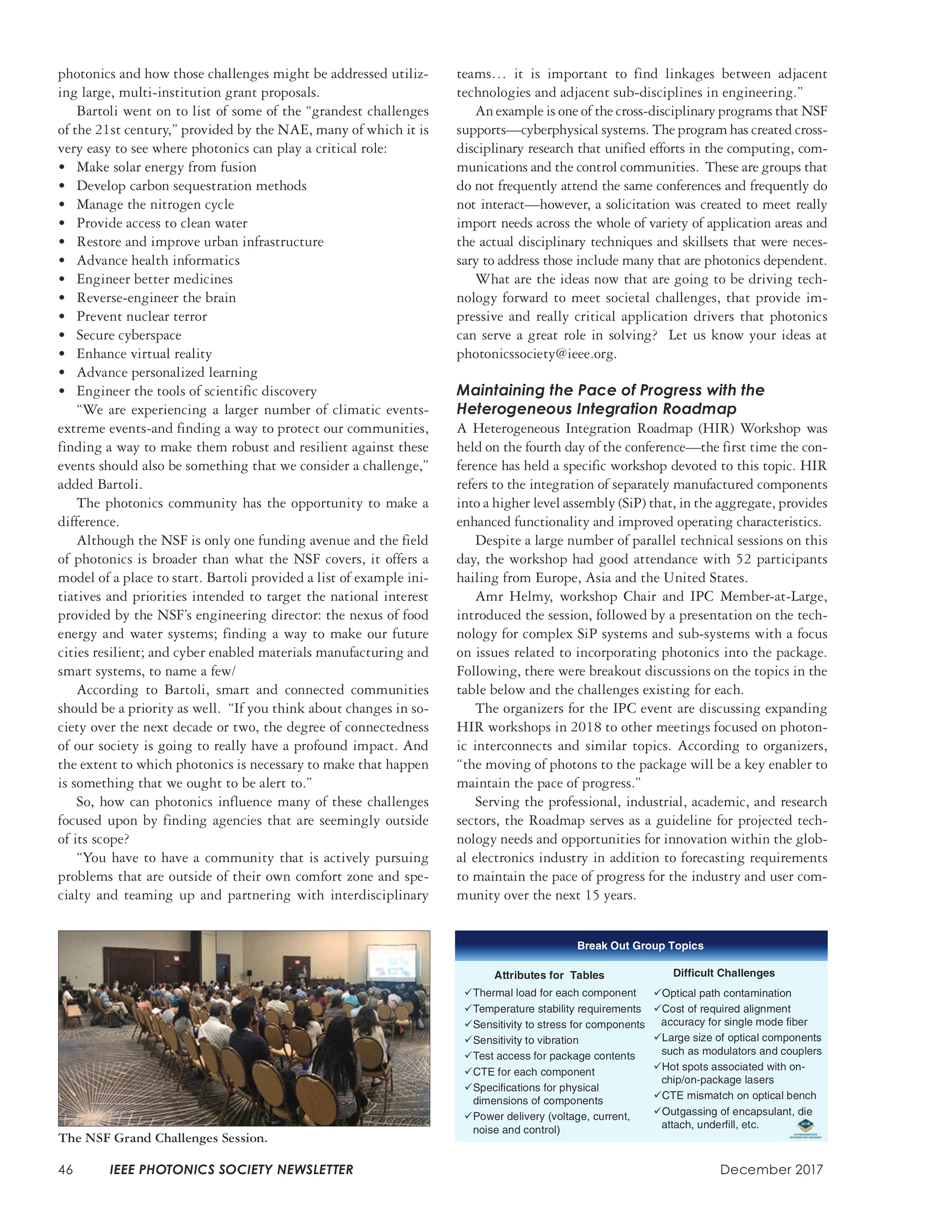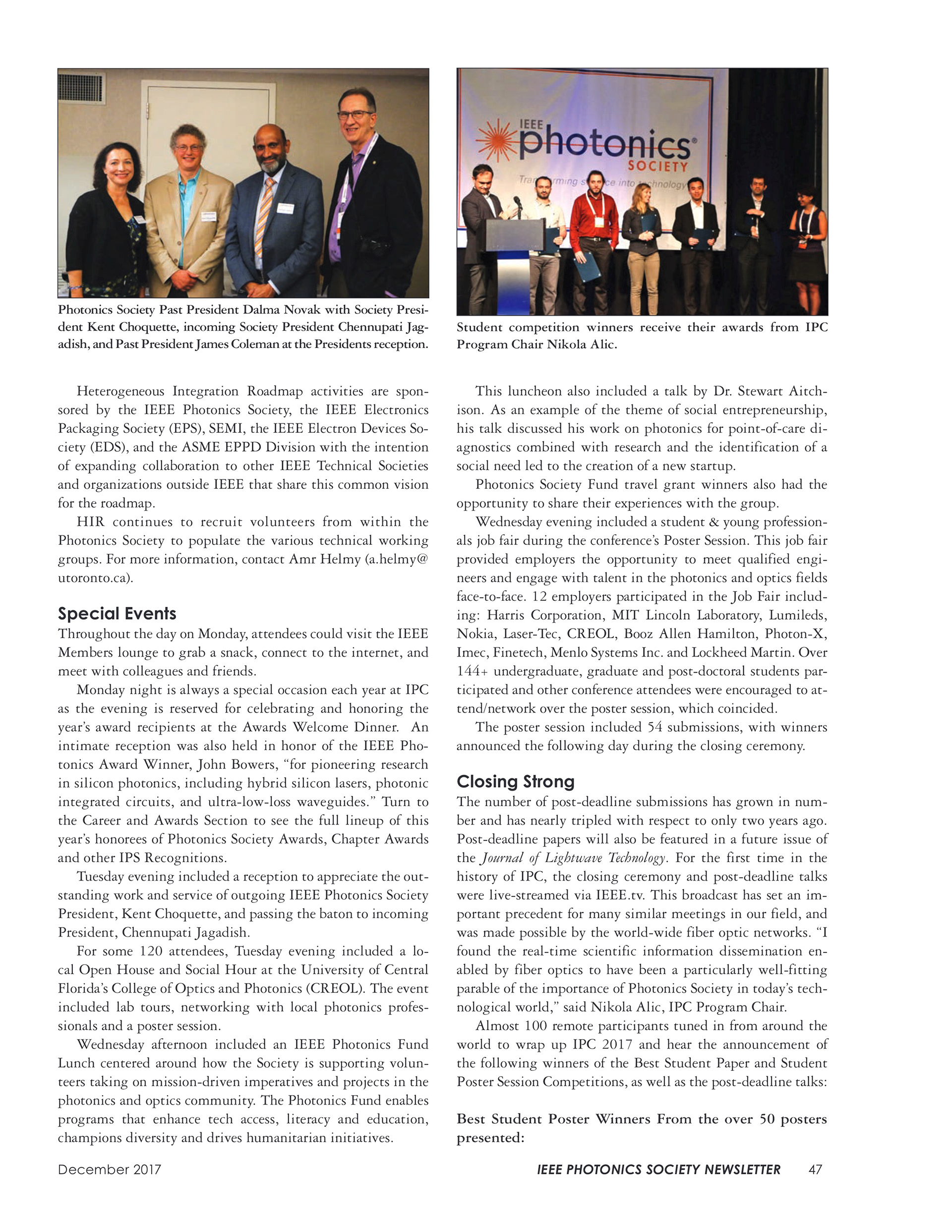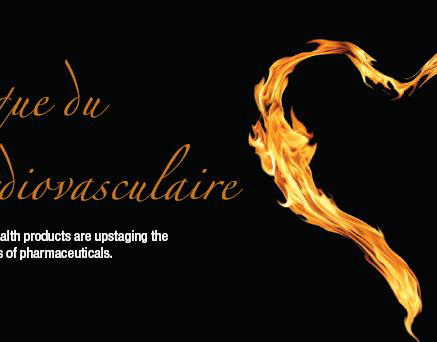October was an exciting month for our Society since, traditionally, it is the time when our Members, as well as photonics professionals and students alike gather at the Society’s Annual meeting—the IEEE Photonics Society Conference (IPC). This year’s conference, having taken place 1–5 October in Orlando, Florida, USA, was an outstanding success, concluding with 520 attendees and 401 presentations and 90 technical sessions.
The evolution of IPC conference organization, initiated by Professor David Plant and Dr. Dalma Novak, and built upon, by a number of succeeding chairs (Tom Clark, Amr Helmy, Hilmi Volkan Demir and Martin Dawson), has come into fruition. The efforts of the Society and the hard work of the volunteers have coalesced into a meeting of excellent technical quality and that of truly inspiring and thought-provoking content and events. The Conference Program Committee has worked diligently over the past year to put together a strong and unique mixture of ground-breaking scientific reports, in-depth sessions, as well as numerous educational and professional development opportunities.
One attendee noted: “Having attended IPC for a few years, I must say that this was clearly one of the best years ever. Not only was the quality of the presentations and speakers outstanding, but the opportunities for interacting and networking were plenty.”
The weather in Florida was not particularly kind to us this year as the tropical storm season had put the conference into jeopardy only weeks before the event. Nevertheless, the quality of the program has made up for all the weather shortcomings and we all had plenty of interesting sessions to attend.he rich program offered this year featured over four hundred forty talks.
Valuable insights were acquired by attending a selection of seven Tutorials and six Special Symposia about hot and emerging topics in photonics: Visible Light Communications/LiFi, Photonics in Data Centers, High-speed VCSELs, Lightwave-driven Peta-Hertz electronics, Label-free Super Resolution Microscopy, and Photonics-based RF-signal generation.
... READ MORE BELOW
